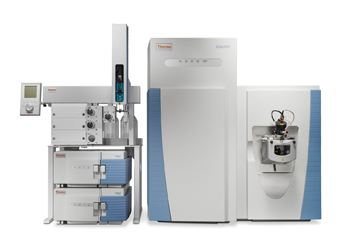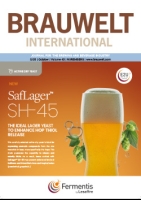EQuan MAX, an automated high throughput LC-MS solution for water and beverage analysis
Thermo Fisher Scientific Inc. announced the launch of the Thermo Scientific EQuan MAX, an automated high throughput Liquid Chromatography-Mass Spectrometry (LC-MS) solution for the analysis of contaminants in water and beverages. This innovative system with high resolution and accurate mass (HRAM) boasts new screening and quantitative capabilities that provide enhanced system flexibility and productivity.
EQuan MAX combines with the power of the Exactive LC-MS system. The Exactive is a high resolution benchtop LC-MS system, powered by Oribtrap technology, designed for high throughput screening of target and non-target compounds.
In addition, the EQuan MAX can also be used with the full range of Thermo Scientific TSQ series triple stage quadrupole mass spectrometers.
The new system is a comprehensive solution for the analysis of pesticides, pharmaceuticals, personal care products, endocrine disruptors and per-fluorinated compounds in environmental water, drinking water and beverages. With EQuan MAX, samples are directly injected for LC/MS analysis, eliminating the need for off-line sample preconcentration. Its unique online sample preparation technique reduces analysis time from days to minutes, designed to increase lab productivity.
Its large injection volume (1-20mL) improves detection limits over conventional LC-MS analysis. In addition to large injection volumes, EQuan MAX now supports injection volumes as low as 1µL. Switching between injection volumes can be automated for overnight operation and increased productivity, without the need to manually change plumbing configurations.
The new EQuan MAX autosampler and plumbing provide out-of-the-box compatibility with the Thermo Scientific Accela 600 high pressure liquid chromatography (HPLC) and Thermo Scientific Accela 1250 ultra-high pressure liquid chromatography (U-HPLC) systems. This enables users to take full advantage of the most advanced Thermo Scientific HPLC technology to achieve fast, efficient chromatographic separations over an expansive range of flow rates and pressures. The new autosampler is also more compact, reducing total system footprint from approximately 5 to 2.5 square feet, saving valuable lab space.
Source
BRAUWELT International 2010



